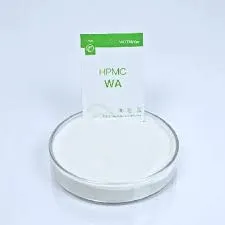
Sep . 04, 2024 12:43 Back to list
hpmc density
Understanding HPMC Density A Comprehensive Overview
Hydroxypropyl methylcellulose (HPMC) is a cellulose ether widely used in various industries due to its unique properties, including viscosity, film-forming ability, and non-ionic nature. One of the key characteristics of HPMC that significantly influences its application is its density. Understanding HPMC density is crucial for formulators and manufacturers in sectors such as pharmaceuticals, food, and construction, as it affects the performance, stability, and delivery of products.
What is HPMC Density?
Density, in a general sense, is defined as mass per unit volume. For HPMC, the density is determined by its molecular weight, degree of substitution, and water content. Typically, HPMC exhibits a density range of approximately 1.1 to 1.3 g/cm³. Factors such as processing methods and the presence of additives can also influence the final density of HPMC formulations.
Importance of HPMC Density
1. Impact on Solubility and Dispersion The density of HPMC plays an essential role in its solubility in aqueous environments. For instance, lower-density HPMC grades tend to have higher solubility, making them ideal for applications where quick dissolution and dispersion are critical.
2. Influence on Viscosity The viscosity of HPMC solutions is directly related to its density. Higher density grades generally provide greater viscosity and stability for emulsions and suspensions, which is particularly valuable in pharmaceutical formulations where consistent active ingredient delivery is required.
3. Effect on Formulation Stability In formulations, the density of HPMC can impact physical stability. For example, higher density HPMC might aid in preventing sedimentation in liquid products, enhancing overall product quality and shelf life.
hpmc density

4. Optimization of Processing Techniques Knowledge of HPMC density is also essential for processing parameters in manufacturing. For instance, in the production of tablets, understanding the density can help in optimizing granulation and compression processes. A precise control of density ensures uniformity and efficacy of the final dosage forms.
Applications of HPMC Based on Density
- Pharmaceuticals In drug formulations, HPMC is used as a binder, thickener, and film-coating agent. The choice of density influences the release rate of the active pharmaceutical ingredient (API) and contributes to the overall efficacy of the dosage forms.
- Food Industry HPMC is often employed as a food thickener and stabilizer. Different densities allow food manufacturers to achieve specific textural properties while also enhancing shelf life.
- Construction In construction materials, such as adhesives and mortars, HPMC's density affects the workability and adhesion properties. Adjusting the density can enhance the performance of construction products, making them more efficient and reliable.
Conclusion
In summary, HPMC density is a critical parameter that influences its applications across various industries. A thorough understanding of how density affects solubility, viscosity, stability, and processing can enable formulators to make informed decisions that optimize performance in their respective products. As research and technology continue to evolve, the emphasis on HPMC density will undoubtedly play a pivotal role in the development of innovative solutions in the marketplace. Whether in pharmaceuticals, food, or construction, appreciating the significance of HPMC density is essential for achieving desired outcomes in product formulation and application.
-
Versatile Hpmc Uses in Different Industries
NewsJun.19,2025
-
Redispersible Powder's Role in Enhancing Durability of Construction Products
NewsJun.19,2025
-
Hydroxyethyl Cellulose Applications Driving Green Industrial Processes
NewsJun.19,2025
-
Exploring Different Redispersible Polymer Powder
NewsJun.19,2025
-
Choosing the Right Mortar Bonding Agent
NewsJun.19,2025
-
Applications and Significance of China Hpmc in Modern Industries
NewsJun.19,2025







